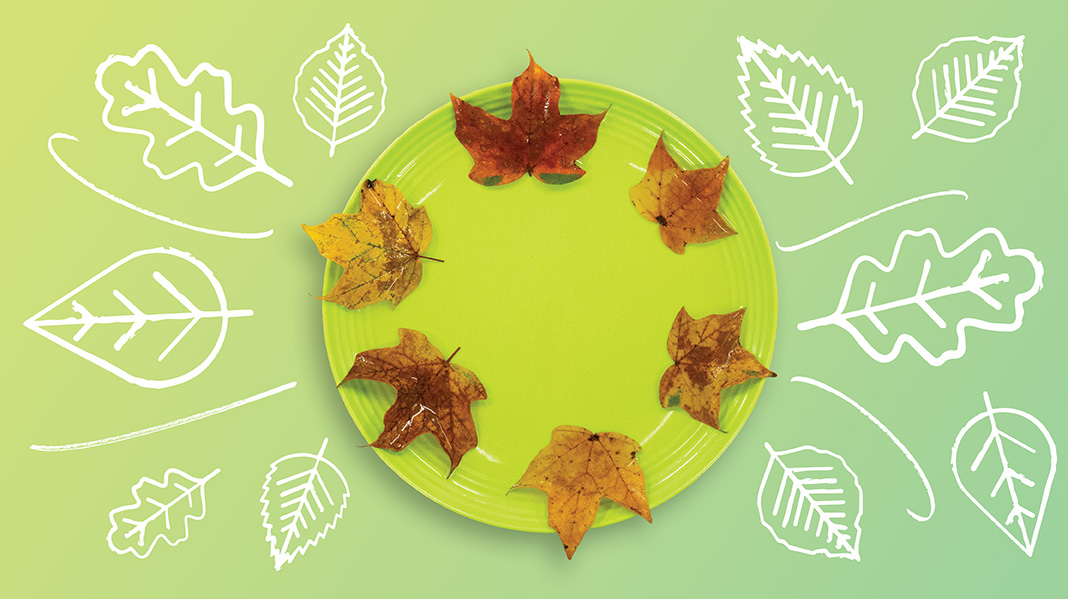
I will never forget my most stunning experience with fall color. I was in high school, taking a driver’s education course, and it was time to practice our freeway driving. My driving buddy and I didn’t know where we wanted to go. So, the instructor suggested we drive to the Blue Ridge Mountains in western North Carolina. When I was driving, I barely looked at anything but the road. It was only my second time behind the wheel! But, when my driving buddy took over, I was able to look out at all the beauty of God’s creation around me. And what a sight it was! I didn’t take a camera with me, so all I have are memories. Wouldn’t it be exciting to keep that fall color around? Preserving leaves with glycerin is easy!
Fall
Harvest Themed Homeschool Activities

What’s not to love about fall? Cooler weather, colorful leaves, apples, and pumpkins are the perfect inspiration for harvest-themed homeschool activities you can enjoy with your family. It’s an ideal season for both indoor and outdoor creativity, so here are just a few ideas to jumpstart your fall plans.
Find fun fall crafts!
Barriers to Joy from the Fall

Have you ever had a frustrating experience when teaching your child? I know I have. I teach my children Grade 1–3 history. Last year was the first year I taught my second daughter history, and it was smooth sailing. But this year, it has been a challenge. The material is more advanced and abstract. Tears have come several times during our first three months. We’ve hit some hard barriers in both teaching and learning already.
In an earlier post, I mentioned some Scriptures that teach the importance of having joy in learning. We have a scriptural expectation for a joy in our work. Furthermore, there is a connection between our work and our learning. Naturally, there’s a parallel between joy in our work and joy in the work of learning. But if we have a scriptural expectation for joy in learning, why don’t our children always experience that? There are three things the fall has broken that can prevent that joy.
Barriers from a Broken Creation
When Adam sinned, the earth was cursed. And now all of creation groans under sin (Romans 8:22). Because of the curse, nothing is as easy as it was designed to be, including learning. Just like Adam, our child will learn “by the sweat of [his] face” (Genesis 3:19). Learning isn’t easy for kids, and teaching isn’t easy for moms and dads. We cannot reverse the fall. But like farmers who toil to extract food from the ground and yet still rejoice in their labor, we can toil at learning with the expectation that there will be joy in mastery.
Broken Hearts
Not only is learning harder, but our hearts can also come to detest things we should love. Romans 3:11 reveals that there’s no one who understands; we all wander out of the way; we are all unprofitable. The lazy man doesn’t want to work even though God calls it a blessing. Sad to say, our children’s hearts can hate the good that God gives us, including learning. As parents, we’ve been given the high calling of shepherding our children’s hearts. So when we see signs that their hearts are opposed to something good, we need to direct them wisely back toward it.
Barriers from Broken Pedagogy
Pedagogy is the method or practice of teaching. Regrettably, we sometimes unintentionally contribute to our children’s frustration with learning if we adopt poor methods of teaching.
Remember those farmers that Isaiah spoke to (Isaiah 28:24–28)? They learned to farm effectively by observing how God’s creation worked and adjusting their farming accordingly. That’s what good teachers do too. They observe the way children learn and adjust their methods accordingly.
For homeschool parents, it’s easier to “data dump” than it is to create an engaging learning experience. Our challenge is to create the learning experiences our children need for success. Have you ever found yourself saying or thinking:
- “Here is the information—now learn it.”
- “Read the book and answer the questions.”
- “Here’s a list of terms to know for the test.”
- “Memorize these facts.”
It’s so much easier than taking the time to craft a learning experience. But when we take the easy way, we’re not helping our children. We’re teaching in a way that’s expedient for us, and not in a way that fits how our children are made to learn. As homeschool parents, we need to be constantly working to discover the ways God intends children to learn, and then conform our teaching to that creational norm.
As a result of the fall, there are going to be real barriers to joy-filled learning. The material is often hard, and there’s a fleshly aversion to hard work. My children won’t want to do it all the time. There’s also a temptation for me to choose easy paths for teaching instead of creating learning experiences that enable them to learn. In a future post, I will share some of the strategies I’ve found to help create a joyful learning experience despite our fallen condition.
Reaching Out This Fall

I love fall and everything about it: the cooler temperatures (perfect hoodie weather), low humidity, brilliant colors, and a plethora of autumn recipes to try. It’s a perfect time of year to enjoy lots of outdoor activities with family such as hiking, bonfires, hayrides, corn mazes, and apple picking. It’s also a great season to establish family traditions and create lifelong memories. But as we make fall plans, let’s take some time to think about how we as homeschooling families can use some of these activities as a means of reaching out to the unsaved around us.
The Reason for Reaching Out
After all, we’re not here on this earth to just rear our children, work hard, serve in our churches, and enjoy recreational time—although all of these are good things. God left us here after He redeemed us so we may bring Him glory, and one way we can do that is by fulfilling the Great Commission in witnessing to the lost and seeking to bring them to Christ so they can be discipled and grow. And it’s much easier to witness to people when we’ve established rapport and found common ground with them. Yes, we should invite them to church, but we need to find ways to connect with them outside of church as well.
Fun Activities with Purpose
So what better way to get to know non-Christian acquaintances than by enjoying some of these fall activities with them? Ask them to join your family at a local corn maze or for a hayride. Invite them over to your house for a bonfire and s’mores. If they’re outdoor people, plan a hike together and pack a picnic lunch. You could host a pumpkin carving/decorating contest. Maybe you’ve met an unsaved family that is either unable or not quite ready to join you for these activities. A great way to still reach out is by baking them a fall treat such as pumpkin cookies or an apple pie. Consider signing your children up for a community sports league, such as soccer. This is a great way to meet families in your area; not only will you perhaps get an opportunity to witness to someone, but so will your children.
Outreach Opportunities
As the holidays come closer, the opportunities for reaching out and serving others also increase. Does your church do a soup kitchen or other mission projects during the Thanksgiving and Christmas seasons? Plan to help out this year! Your children can also participate in Operation Christmas Child, a special program run by Samaritan’s Purse. Shoebox collections end on November 19, so make sure to get your box together before then. Here are some more ideas for serving others this fall.
Whatever the method, use it as an opportunity to build bridges so you can eventually bring Christ into your conversations. As homeschoolers, we have unique opportunities we can use to spread the gospel to lost families all around us. Let’s pray for God to use us this fall as we seek to bring the good news of salvation to those who may have never heard it.
• • • • •
Jennifer is a pastor’s wife and mom of two young girls and loves homeschooling them. During her own twelve years of being homeschooled, Jennifer developed a passion for reading and writing. She earned a bachelor’s degree in creative writing and relishes writing during her free time.
3 Connections Between Faith and Learning

According to the National Center for Educational Statistics, more than 60 percent of homeschoolers choose to teach their children at home because they want to “provide religious instruction.” That was true for my parents when they decided to homeschool me, and it is true for my family as my wife and I now homeschool our children. Secular public education is not an option for us. We want to provide our kids with a Christian education that makes the connection between faith and learning in our homeschool.
Secular Disconnect
If you ask most Christian parents whether they use secular lessons in their homeschool, they typically say, “No way!” But that’s assuming that secular means denying God’s existence. Actually, secularism claims that religion is a private matter and as such shouldn’t influence considerations regarding public life. So we have public officials who say, “I’m a Christian, but I don’t let that affect my decision-making.”
When we take a secular-based teaching of math, science, or English into our homeschool and place religious education around it, we present education and faith as unrelated. We’re still giving our children a secular education by acknowledging a disconnect between faith and learning.
Worldview Connection
The connection between faith and homeschooling comes from a strong biblical worldview. The basis of any worldview is a big narrative that answers crucial life questions such as “Who am I?” and “Where did I come from?”
The Bible gives us the narrative of Creation, Fall, Redemption. Understanding this story and its implications for homeschooling enables us to connect faith and learning. Let’s look at how each part of this narrative connects faith and learning.
1. Creation Connection
God created humans in His own image and blessed them with stewardship over all the rest of His other creation. These truths from the creation account enable us to make the first and foundational connection to learning. We learn because God blessed us with His image and gave us a job. Our learning reflects God’s glory and it is a powerful tool for fulfilling His command to exercise rule over creation.
2. Fallen Disruption
When Adam sinned, his heart became fallen. It loves wrongly and so thinks wrongly. The account of the fall points to a second, deeper connection between faith and learning. As we learn, we must be vigilant of wrong thoughts based on wrong loves. That doesn’t frighten us from education. Instead we should use the Bible as a corrective lens in all that we’re learning so that we can evaluate the ideas within any subject and reject the false ones.
3. Redemption Connection
God’s plan for redemption is as sweeping as the fall. It can straighten out all of those twisted thoughts we encounter in science, literature, and history. As believers, we’re obligated to bring every thought into obedience to Christ. This is the final, deepest connection between our faith and learning. When we evaluate an erroneous idea in a subject, we cannot simply identify it as false and move on. We must press it back toward God’s creational design.
Let’s take math and see how a biblical worldview enables us to connect faith and learning. Notice how each step makes a deeper connection.
- Creation: Since we’re made in God’s image, we can use math as a powerful tool. So we use it to rule over God’s creation and serve others to bring Him glory.
- Fall: God’s lordship over all creation disproves secularists’ claim that “math is neutral.”
- Redemption: Math must be governed by the Christian ethic laid out in Scripture. It should only be used to love my neighbor and never used to do my neighbor harm.
You and I know the account of Creation, Fall, and Redemption. But how are we doing bringing these big-story implications for learning to our children’s homeschooling? Take time to determine if your homeschooling is presenting faith and learning as unconnected or if it is reaching the kind of connection that a biblical worldview demands. At BJU Press, we’re committed to providing resources and curriculum that assist homeschool families in creating those connections between faith and learning. Each post below provides an in-depth look at the three connections—Creation, Fall, and Redemption.